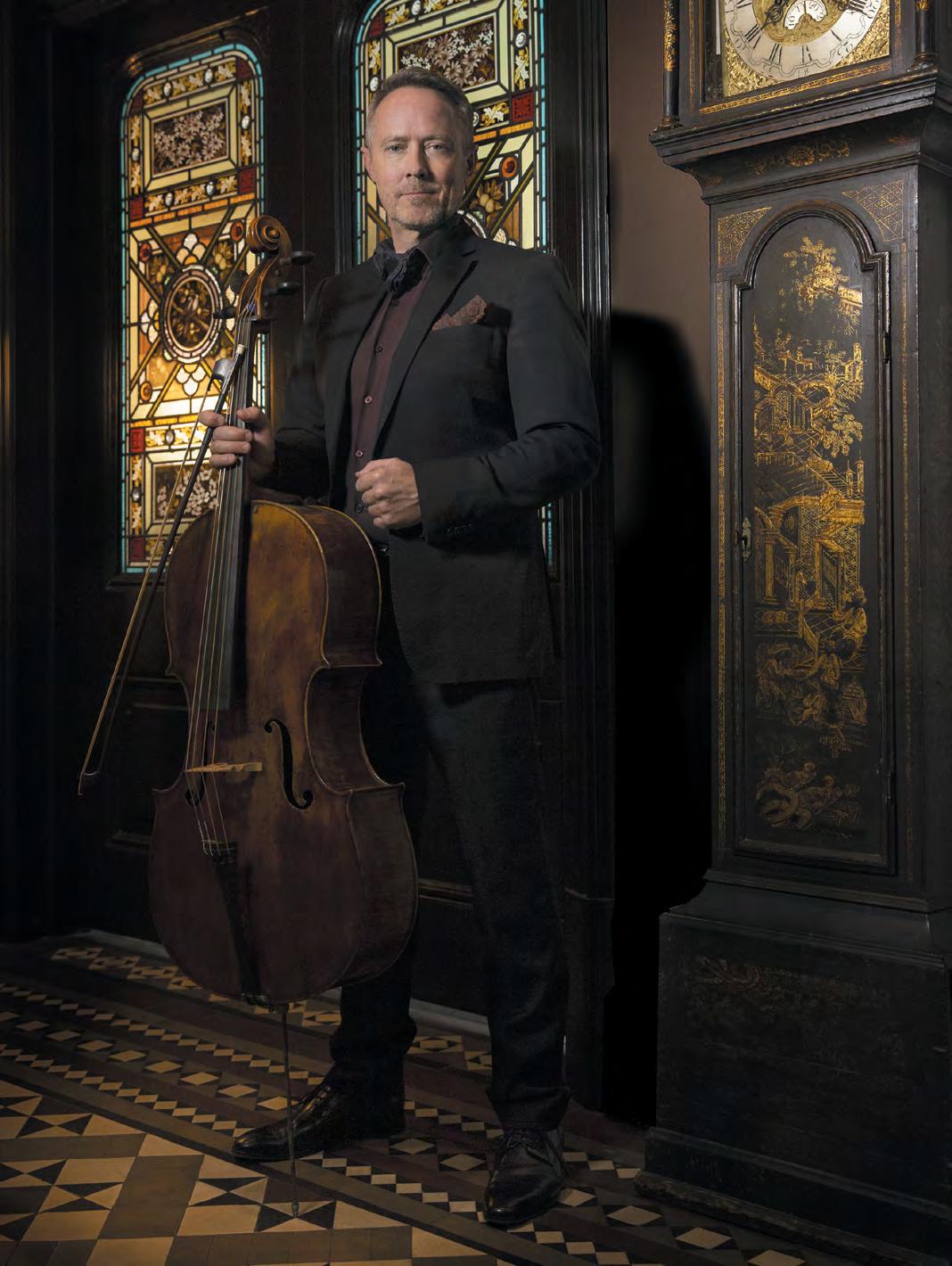
30 October –8 November 2025


30 October –8 November 2025
1—
Haydn’s Sunrise MARCH
2— Schubert Songs with David Greco MAY
3—
Mozart’s Salzburg with Erin Helyard JUNE
5—
Haydn’s Sunrise Regional NSW SEPTEMBER
7—
6—
4— Haydn’s Miracle AUGUST
Hadyn’s Sunrise Broken Hill & the Menindee Project SEPTEMBER
AHE Alchemy Emerging Artists Ensemble OCTOBER
9—
Beethoven’s Eighth NOVEMBER
8— Spring Academy OCTOBER
10— 2026 SEASON LAUNCH NOVEMBER
Artists
Skye McIntosh, Artistic Director and violin
Matthew Greco, violin
Kristen Linfante, viola
Rafael Font, viola
Daniel Yeadon, cello
Pippa Macmillan, double bass
Mikaela Oberg, flute
Program
BOCCHERINI
String Sextet in F major Op. 23 No. 6
MOZART
Symphony No. 40 in G minor arr. Cimador (1820)
Interval
ELLA MACENS
Forever Ours, String Sextet (World Premiere - New Commission)
BEETHOVEN
Symphony No. 8 in F major Op. 83 arr. F.W. Crouch (1821)
The concert duration is approximately 2 hours including interval
facebook.com/TheAustralianHaydnEnsemble instagram.com/@australianhaydnensemble
Performances
CANBERRA
Thursday 30 October, 7pm Gandel Hall, National Gallery of Australia
BERRY
Friday 31 October, 7pm
Berry Uniting Church Hall
SOUTHERN HIGHLANDS
Saturday 1 November, 4pm Bowral Memorial Hall
SYDNEY
Monday 3 November, 7pm
City Recital Hall
PORT MACQUARIE
Thursday 6 November, 7pm The Glasshouse
LAKE MACQUARIE
Saturday 8 November, 1.30pm Rathmines Theatre
Imagine a summer night in 1812: Beethoven, caught between the chaos of Napoleon’s invasion and a passionate, secret romance, finds himself in a hotel room, pouring his heart out into letters that would later fuel centuries of speculation. This program takes us on a journey through those turbulent, creative moments in Beethoven’s life, contrasting the intensity of his hidden passions with the wit and joy that characterise his Eighth Symphony
The eighth symphony is music that might seem a world apart from the turmoil of his letters. Completed in 1812, it is often thought of as being ‘lighter’ in character than the fifth, sixth or seventh symphonies and to be harking back to the earlier, more classical style of Haydn. It is, however, by no means a lightweight symphony and retains Beethoven’s distinct character. Beethoven himself, when asked by Czerny why the eighth was less popular than his seventh symphony, replied that this was because “the eighth symphony is so much better than the seventh.”
The historical septet arrangement we present was made in 1821 by F.W. Crouch. We know little about the arranger and early performances. The beautiful title page of the edition does reveal some insight:
“Beethoven’s 8th Grand Symphony as performed at the Philharmonic Concerts arranged as a Septet for 2 violins, 2 violas, flute, violoncello and contrabass most respectfully inscribed to Joseph Phillip Salomon Esquire by F.W. Crouch.” As far as we know, it has not been performed since the early nineteenth century, and we are excited to present this modern-day premiere to you today.
The intimate telling of larger-scale works in chamber form was ‘the norm’ at the time, and the stormy brilliance of Mozart’s Symphony No. 40 in G minor is also featured, presented here in Cimador’s 1802 chamber arrangement also for septet. Stripped of the full orchestral forces, this
version distils the symphony’s energy and lyricism into an intimate conversation among a handful of instruments, seven in fact. Mozart’s G minor symphony is one of only two that he wrote in a minor key and is both urgent and intense. In Cimador’s sensitive reimagining, the experience of this work becomes even more direct and personal, allowing us to get right to the centre of Mozart’s emotional expression.
The program opens with Boccherini, one of AHE’s most-loved composers, and we are delighted to be presenting his String Sextet in F major Op. 23 No. 6. It’s an elegant piece, full of all the textures, colours and intimate interplay between instruments that make Boccherini’s voice so unique and distinct.
Finally, to complete the intimate musical narrative, we are delighted to present a new commission by the Australian composer Ella Macens, writing for period instruments for the first time. Inspired by Beethoven’s Immortal Beloved letters, her string sextet, entitled Forever Ours, taps into the idea of communication through letters - exploring love that is eternally captured in written form, yet never spoken aloud. Macens brings a modern voice to this age-old theme, intertwining it with historical resonance in this inaugural commission for AHE.
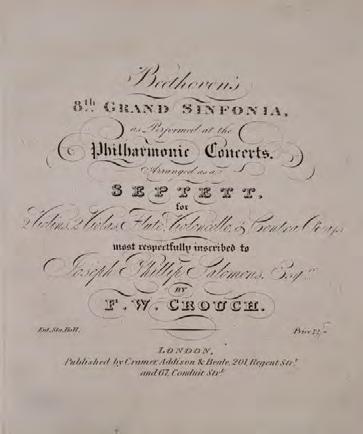
I trust you will enjoy this beautiful music, as we refresh our understanding of the familiar and discover whole new perspectives. It’s been a pleasure to play for you in 2025, and we look forward to seeing you in our audience in 2026.
Skye McIntosh Artistic Director & Violin
The Australian Haydn Ensemble, (AHE) was founded in 2012 by Artistic Director and Principal Violinist Skye McIntosh and is now in its thirteenth year. AHE has quickly established itself as one of Australia’s leading period-instrument groups, specialising in the repertoire of the late Baroque and early Classical eras. It takes its name from the great Joseph Haydn, a leading composer of the late 18th century.
AHE’s flexibility and inventiveness are inspired by Haydn’s fabled originality and the virtuosic musicians he worked with at the court of Esterházy for almost 30 years. It performs in a variety of sizes and combinations, ranging from quartet, quintet or septet, to chamber orchestra with special guest soloists to a full orchestra with choir.
The Ensemble has developed a flourishing regular series at the City Recital Hall, the Sydney Opera House Utzon Room and in Canberra, where it was Ensemble in Residence at the Australian National University in 2014. AHE also performs
throughout regional NSW and presents education workshops to students of all ages, focusing on imparting 18th-century historical performance techniques.
AHE is particularly interested in presenting unusual programs of 18th-century chamber versions of works by Haydn, Mozart and Beethoven, as well as presenting the music of lesser-known composers, such as Abel, Albrechtsberger, C.P.E. Bach, J.C. Bach, David, Graun, Hoffmeister and Vanhal.
To commemorate its 10th anniversary, the Ensemble recorded its third CD of music by Mozart, released in 2024. In October 2023 AHE undertook its first international tour of the United States, including performances at Carnegie Hall and at the opening of the new Australian Embassy in Washington DC, garnering full houses, standing ovations and glowing reviews.
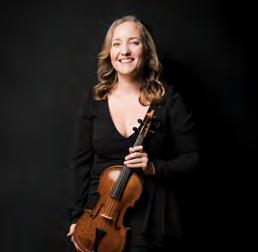
Skye McIntosh / VIOLIN
Skye is the founder and Artistic Director of the Australian Haydn Ensemble, now in its twelfth year. This audacious undertaking is a testament to Skye’s musicianship and entrepreneurial spirit. AHE, known for its innovative and ambitious programming, was delighted to perform at the Adelaide Festival in 2022 and Canberra International Music Festival in 2022 and 2023, as well as continuing to tour to Canberra and across regional New South Wales each year.
Skye attended the Royal Academy of Music in London, the Queensland Conservatorium and the Sydney Conservatorium of Music, has made numerous concert appearances as soloist and director, and led the AHE on its first tour to the US in 2023, including a performance at Carnegie Hall. She has also toured nationally with the Australian Brandenburg Orchestra, as well as performing with the Orchestra of the Antipodes (Pinchgut Opera) and the Australian Romantic & Classical Orchestra. ABC Classics has recently released AHE’s third CD, featuring Skye performing Mozart’s Violin Concerto in G major.
Skye is playing a violin by Tomaso Eberle, 1770, Naples
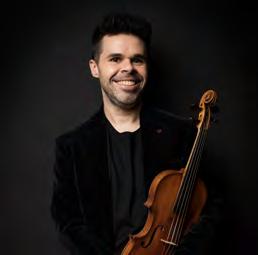
Matthew is a concertmaster, soloist and core member of some of the world’s leading period instrument ensembles. He has been a regular member of the Australian Brandenburg Orchestra and concertmaster of the Orchestra of the Antipodes (Pinchgut Opera) since 2006. In 2010 he moved to The Netherlands where he studied Baroque violin at The Royal Conservatoire The Hague and worked with leading European ensembles including De Nederlandse Bachvereniging and Les Talens Lyriques (France). He is a founding member of the Sydney-based ensemble The Muffat Collective.
Matthew enjoys teaching baroque violin at the Sydney Conservatorium of Music as well as performing with a variety of international ensembles and festivals in Australia and Europe. Committed to producing a unique and individual sound based on historical performance practices, Matthew believes that 17thcentury and 18th-century music is full of vitality and emotions that speak to us now, as much as they did in the past.
Matthew is playing a violin by David Christian Hopf, 1760, Quittenbach
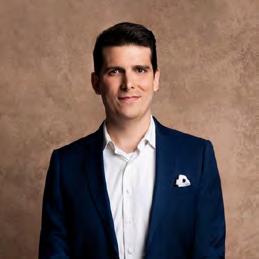
Rafael Font / VIOLA
Rafael started his violin studies at the age of five in his hometown of Caracas, Venezuela. After completing studies at Guildhall School of Music and Drama, he worked with many leading British early music groups including the Academy of Ancient Music and Orchestra of the Age of Enlightenment.
He pursued postgraduate studies in Baroque and Classical violin at the Royale Conservatoire The Hague. Since moving to Sydney, he has been a regular member of the Australian Brandenburg Orchestra and the Orchestra of the Antipodes (Pinchgut Opera).
Rafael is a highly versatile performer, with interests ranging from Monteverdi to Tchaikovsky on both violin and viola. Rafael is also a dedicated music teacher, regularly tutoring violin and viola and conducting ensembles across several schools in Sydney. When he is not playing the violin, Rafael is likely listening to history podcasts or watching documentaries.
Rafael is playing a viola by Simon Brown, 2010, after Antonio and Girolamo Amati, 1594, (kindly on loan by the maker)
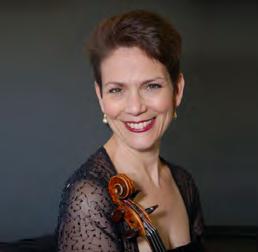
Kristen holds bachelor’s and master’s degrees from the Juilliard School of Music (USA) where she began her studies at the age of 14 years. She specializes in both modern and baroque viola and has served as Associate Principal Viola of the Grammy Awardwinning Baroque ensemble, Apollo’s Fire. She also performs regularly with Chatham Baroque and New York-based Four Nations Ensemble. Kristen served as principal viola of the Orchestra de Catania in Sicily, and has performed around the globe with the Philadelphia Orchestra, San Francisco Symphony, Opera, and Ballet, Houston Symphony, and the Minnesota Orchestra.
For the past 29 years, Kristen has performed at the Grand Teton Music Festival in Jackson Hole, WY. She is currently Director of Development, Programs and Partnerships at the FRK Foundation in New York City and the Frederick R. Koch Foundation of Austria.
Kristen is playing a viola by Walter Mahr, 2005, Bubenreuth, Germany
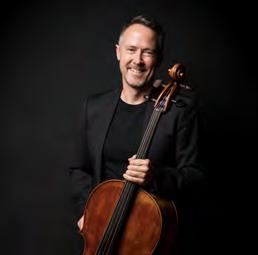
Daniel Yeadon / CELLO#
Dr Daniel Yeadon is a Senior Lecturer at the Sydney Conservatorium of Music, University of Sydney, where he teaches cello and viola da gamba, coaches chamber music, and engages in research into learning, teaching and historical performance practices. Originally from the UK, Daniel read physics at Oxford University and then completed his postgraduate studies at the Royal College of Music in London.
Daniel has a love for a wide range of musical genres and is an exceptionally versatile cellist and viola da gamba player, performing repertoire from the Renaissance through to Contemporary. Daniel is a passionate chamber musician, playing regularly with Australian Haydn Ensemble, Ironwood, Australian Romantic & Classical Orchestra, and Bach Akademie Australia. For many years Daniel was a member of the renowned Fitzwilliam String Quartet and the exuberant period instrument ensemble Florilegium. He has made many award-winning recordings.
Daniel is playing a cello by William Forster II, 1781, London
*Daniel Yeadon appears courtesy of the Sydney Conservatorium of Music
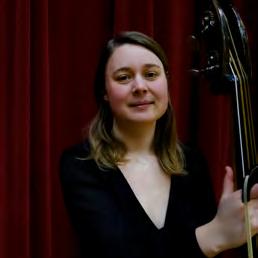
Pippa is a renowned specialist of historical bass instruments. She is a core member of Tafelmusik Baroque Orchestra in Canada, currently on leave of absence, and is exploring performing opportunities in Australia, including with the Australian Brandenburg Orchestra, Pinchgut Opera, Australian Romantic and Classical Orchestra, and Australian Haydn Ensemble. Pippa was the first undergraduate of the Royal Academy of Music to specialise in Baroque Double Bass, after which she completed a Masters in Historical Performance at The Juilliard School.
Between 2015 and 2019 Pippa was Professor of Baroque Double Bass at the Royal College of Music, London. In her native UK, she has performed regularly with The English Concert, the Orchestra of the Age of Enlightenment, Orchestre Révolutionnaire et Romantique, English Baroque Soloists, Academy of Ancient Music, and Florilegium. In 2015 she appeared in London’s West End in the Globe Theatre’s production of Farinelli and the King, as well as in the play’s Broadway transfer in 2017. Pippa is playing a bass by Unknown, mid-18th century, Italy
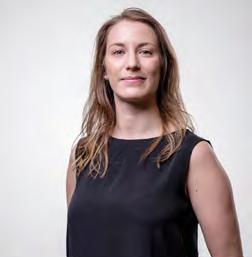
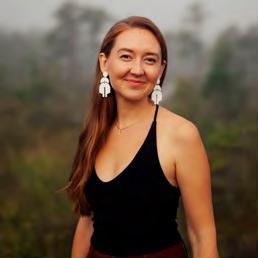
Mikaela is a freelance flute and recorder player who specialises in historical performance practice. She holds a Master of Music and Bachelor of Music in Historical Performance from The Royal Conservatoire The Hague, and a Bachelor of Music in Music Education and Recorder Performance from the Sydney Conservatorium of Music. She performs as Principal Flute/Recorder with the Orchestra of the Antipodes (Pinchgut Opera) and Bach Akademie Australia, Principal Recorder with the Sydney Symphony Orchestra and with the Australian Chamber Orchestra. She has been a member of the Australian Brandenburg Orchestra since 2005, performing as soloist on regional and national tours. She also regularly performs chamber music and liturgical music throughout Sydney, NSW. Mikaela is a respected teacher of old and new flutes, and the recorder. She has been an examiner for the Australian Music Examinations Board (AMEB) since 2019 and teaches at Queenwood School for Girls, Fort Street High School and from her home studio on Sydney’s Northern Beaches.
Mikaela is playing a flute by R. Tutz, 2007, Innsbruck, after H. Grenser, c.1810, Dresden
Ella Macens is rapidly becoming one of Australia’s most celebrated young composers. Frequently commissioned and performed by Australia’s leading ensembles and organisations, as well as internationally, her works for orchestras, choirs, chamber music ensembles and soloists draw upon elements of her Latvian heritage and fuse these with her love of popular and classical music. Her language is rooted in a deeply evocative and sensitive musical aesthetic, for which she is becoming wellknown in Australia and beyond. Ella’s list of commissions and performances is extensive. Internationally, Macens’ works have been performed by the Ulster Orchestra, Brunel Sinfonia, Seattle Youth Symphony Orchestra, Richmond Delta Youth Orchestra, State Choir Latvija, the Riga Cathedral Girls’ Choir, the Jazeps Vitols Latvian Academy of Music Chamber Choir, the Sonic.Art Saxophone Quartet, and the XV Latvian Canadian Song and Dance Festival, among others. In 2023 she was appointed Associate Lecturer in Composition at the Sydney Conservatorium of Music.
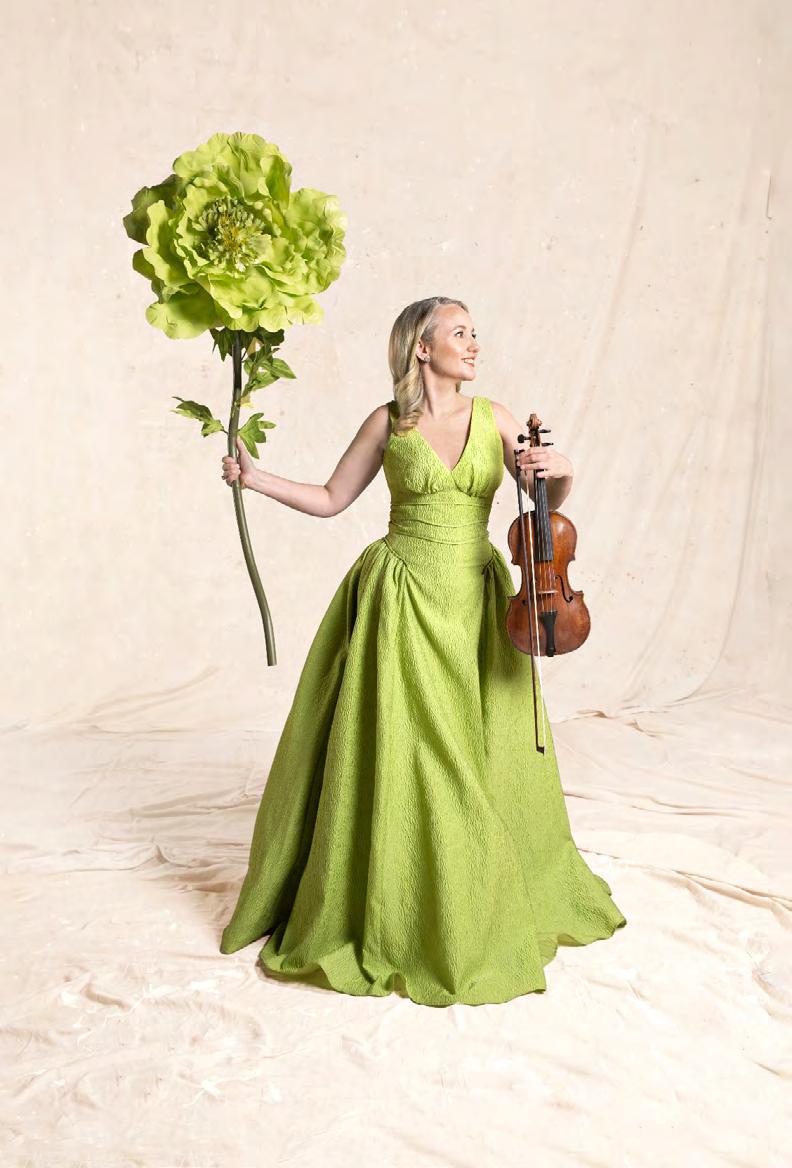
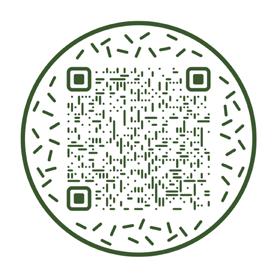
Join the notification list to be the first to know the details
Luigi Boccherini (1743-1805)
String Sextet in F major Op. 23 No. 6
Andantino grazioso
Allegro assai
Tempo di minuetto
Prestissimo
When 18th-century music-lovers talked of “The Wife of Haydn”, it wasn’t out of interest in the domestic life of the Father of the Symphony. It was the nickname, coined by the violinist Giuseppe Puppo, for Luigi Boccherini: virtuoso cellist and composer of some 20 symphonies, 12 cello concertos and countless chamber works. Born in Lucca, near Florence, he travelled first to Vienna and later to Paris as a performer and composer, settling in Madrid in 1768. He spent much of the rest of his career under the patronage of various members of the Spanish royal family, and later (in a form of classical-era remote working) the cello-playing King Friedrich Wilhelm II of Prussia - but he remained based in Madrid for the rest of his life, performing and composing until the last.
Understandably enough, string chamber music in all its forms simply flooded from Boccherini’s quill: nearly 100 string quartets as well as 70-plus string trios, and quintets with flute, guitar, piano and second cello (a form he made his own, with more than 140 examples). His 12 string sextets even the odds slightly by adding a second viola, allowing an even more lush and lyrical soundworld, though Boccherini still relished the opportunity for the individual instruments (and his own cello in particular) to display their prowess. Composed in 1776 and described as “Sestetti Concertanti”, the six sextets Op. 23 were dedicated to the Infante Don Luis, one-time heir to the Spanish throne. Don Luis was a true connoisseur, who also supported the painter Goya. He still holds the record for the youngest ever
cardinal of the Roman Catholic Church –an office he assumed at the age of eight. You can take the composer of Italy, but you can’t take Italy out of the composer. Boccherini had trained in the instrumental tradition of Corelli, and he had an irrepressible lyrical impulse - even today, there’s something operatic, even Mediterranean, about the singing melodies and swirling, rococo ornamentation that are such a feature of his music. (To the 18th-century mindset, this made his music feminine - hence the nickname “wife”). From the graceful slow movement that opens this sextet, through the rapid-fire conversational exchanges of the Allegro assai and the courtesies of the Minuet (with its whispered, bustling central section) to the sparkling playfulness of the finale, this is music from – and for – a warm climate, delivered with effortless elegance and wit.
Richard Bratby
Wolfgang Amadeus Mozart (1756-1791)
arr. G. Cimador (1820)
Symphony No. 40 in G minor K. 550 Molto allegro
Andante
Menuetto: Allegretto Allegro assai
The world of 18th-century music moved quickly, and without much regard for national boundaries. Mozart never made it to London but the Venetian composer and multiinstrumentalist Giambattista Cimador (17611808) certainly did. Arriving in Britain in 1791 as a singing teacher he was outraged (or so the 19th century scholar Mary Catherine Hamilton tells us) to hear that the musicians of the King’s Theatre, Haymarket had refused to play Mozart’s symphonies –they were apparently too difficult. And so, “he arranged six of them as sestets [sic]
for strings and flute. The work was well done, and the symphonies first made known in this form speedily took their proper place with the public”.
Cimador was an eminently practical musician: a skilled string player, he was well aware that the flute – cheap, portable and (by the standards of the time) relatively easy to play - was probably the single most popular instrument with amateur musicians in the late 18th century. Its presence would only increase the popularity of his Mozart arrangements, as well as adding a splash of colour, even if the arrangement as a whole could only hint at the wondrous light and shade of Mozart’s orchestral woodwinds. Still, it offered an accessible path into what was still strange and ultra-modern music (Mozart had composed the symphony in the space of six weeks in the summer of 1788).
Mozart’s Symphony No. 40 is so familiar today that perhaps we barely realise how original it is: the quiet, anxious accompaniment that begins before the main tune of the first movement (almost unheard of in a classical symphony, but cribbed by many composers since), the fast, angry, Minuet (which was meant to be a lighter interlude), and the jagged, disintegrating harmonies in the middle of the finale – modern-sounding music, even today. Only in the tender Andante does the Symphony seem to stand on terra firma, and even this starts to shift ominously under the melody’s feet. For all his grace, wit and zest for life, Mozart was never afraid to look straight and hard at the most serious of questions. But the music tells it better, and Cimador’s arrangement gives some idea of how bold and fresh this symphony must have sounded to those first, astonished listeners on the opposite side of Europe.
Richard Bratby
Ella Macens Forever Ours (World Premiere –New Commission)
In 1812, Ludwig van Beethoven penned a searingly intimate letter to an unnamed woman he called his “Immortal Beloved.” Never sent and discovered only after his death, the letter has fuelled centuries of
speculation and longing. Was she Antonie Brentano, the married confidante? Or Josephine Brunsvik, whose surviving correspondence with Beethoven reveals a love both profound and forbidden? The mystery remains unsolved, yet the emotional truth of the letter - its aching vulnerability, its defiance of social constraint, its yearning -continues to resonate. This work Forever Ours draws its emotional and conceptual core from the enigmatic letters Beethoven wrote to his “Immortal Beloved”, not to answer the question of identity, but to inhabit the emotional terrain of a love that could not be spoken aloud - yet refused to be silenced. It is infused with longing, devotion, and a quiet defiance. The phrase with which Beethoven signed off - Forever yours, forever mine, forever ours - inspired the title and became the thematic compass for the work: a meditation on eternal love, longing, and the mystery of connection across time and space.
Structured in four movements, the piece opens with a quiet invocation - a musical “calling” between two beings, echoing across distance. This dialogue is fragile and introspective, steeped in solitude and yearning. Motifs emerge like whispered secrets, as if the music itself is guarding something sacred and unspoken. The second movement shifts into a more direct exchange. Voices become bolder, more conversational. There’s a sense of recognition, of emotional risk. The third movement ignites with passion and urgency. Here, love is not passive or wistful - it is charged, ravaged, and alive. It is the heartbeat of immortal souls refusing to fade, refusing to let go. The final movement returns to introspection, revisiting themes of longing and tenderness from the opening. The finale carries a melancholic sense of acceptance. It ends with a quiet affirmation that the souls it speaks for remain forever entwined, never decaying, never truly apart, yet also never together.
Composing this work presented a new and invigorating process for me, given that the Australian Haydn Ensemble performs on period instruments as opposed to the classical instruments with which I am more familiar. This meant I needed to consider things like register, melodic contour and the
timbral effects of gut strings. I approached this commission with the intention of maximising the warmth the AHE conjures, emphasising the love within the narrative. I sought to harness its unique resonance and technical capabilities to create a work that speaks directly to the heart - connecting with the audience and inviting reflection on their own stories. Because in the end, Forever Ours is not just about Beethoven or his belovedit is about the quiet ways we reach for one another across distance and time: through letters, thoughts, and memories.
Ella Macens
Ludwig van Beethoven (1770-1827)
arr. F.W. Crouch (1821) Symphony No. 8 in F Op. 93 Allegro vivace e con brio Allegretto scherzando Tempo di Menuetto Allegro vivace
Great things come in small packages. Beethoven was only 5’4” tall, yet (as one contemporary wrote), “within that limited space is contained the pluck of twenty battalions”. “A little symphony in F” was how he described his Eighth Symphony to the publisher Salomon in London in June 1815. He’d composed it in the summer of 1812, completing it in Linz (where he’d travelled specifically to try and wreck his brother Johann’s engagement) that October; which means that he must have been working on this sublimely playful music at the same time as he was writing his heartbreaking loveletters to the mysterious woman he called his “immortal beloved”.
In any case, it’s clear from his letter to Salomon that he wanted the symphony to travel – and as we’ve already seen, early 19th century orchestral music travelled best in the form of arrangements for chamber ensembles. We don’t know much about Frederick William Crouch, who lived on Warren Street in central London, except that he was a cellist in both the Italian Opera and
many of London’s orchestral concerts, that he published a well-regarded cello textbook as well a set of chamber arrangements of Haydn symphonies, and that his son Frederick emigrated to the USA, where he became a moderately successful songwriter.
Crouch’s seven-player version of the symphony was published by the Royal Harmonic Institution in London in 1823, and repeats Cimador’s trick – with the flute, once again, proving itself the handiest and most versatile of wind instruments. But then, Beethoven’s Eighth is all about doing a lot with very little. The symphony’s first theme sweeps in with such grandeur and verve (vivace e con brio – “lively and with brilliance”) that you don’t even notice that it’s barely four bars long. The first movement stops, restarts, and changes direction: is Beethoven serious? No, and very much yes – just listen to how this witty and explosive movement finally ends.
And to what he does next: not an expressive slow movement, but a brilliantly-engineered musical joke, with a wit so droll that you can’t help but wonder what the punchline will be. (The story that this movement’s clockwork precision was inspired by a malfunctioning early prototype of the metronome has been disproved – but you can hear why it caught on). It’s followed – for the first time in any of Beethoven’s symphonies – by a genuine old-fashioned minuet, with a trio section that soars off into a world of pure romance. And then the violins ignite the finale, which races along its course, speeds to a natural finish, and then…doesn’t. The gears shift, the motor restarts: the Eighth Symphony may be small, but so is an atom. When Beethoven was told that his audience hadn’t liked the Eighth Symphony as much as the Seventh, his answer was blunt: “That’s because it’s so much better”.
Richard Bratby
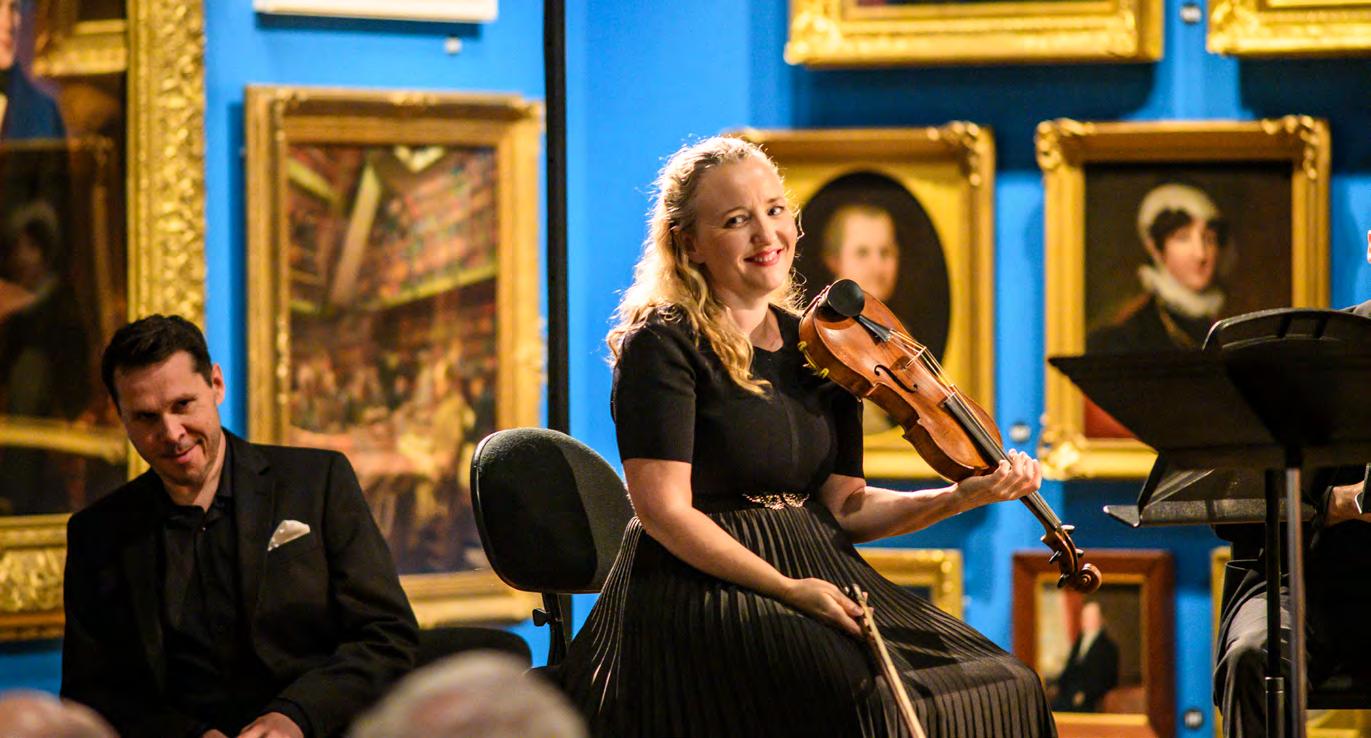

Our patrons enable us to continue presenting wonderful concerts. We are so grateful to everyone who supports us and cannot thank you enough. Patron categories are named after famous 18th-century patrons who supported and commissioned many of Haydn, Mozart and Beethoven’s works that we know and love today. Where would we be without them?
Maria Theresa—
The Queen was a patron of Viennese music, and Haydn wrote his Te Deum at her request.
Esterházy— Prince Esterházy was the main patron of Haydn.
Waldstein— Count Waldstein was an early patron of Beethoven.
Van Swieten—
He was a keen amateur musician and patron of Haydn, Mozart, and Beethoven.
Galitzin—
He was an amateur musician and is known particularly for commissioning three Beethoven string quartets Op. 127, 130 and 132.
Lobkowitz—
He was a Bohemian aristocrat and a patron of Beethoven.
Razumovsky—
He commissioned Beethoven’s Op. 59 String Quartets.
Patron—
Her Excellency the Honourable Margaret Beazley AC KC
Governor of New South Wales
Founding Patron—
The late Dr Timothy Pascoe AM
The Chair’s Circle —
The Chair’s Circle is a group of dedicated supporters who have made a multi-year commitment to supporting the long-term vision of the Australian Haydn Ensemble.
Marco Belgiorno-Zegna AM & Angela Belgiorno-Zegna
Sherry and the late Tom Gregory
Karin Keighley
Peter & Lisa Macqueen
Kevin McCann AO & Deidre McCann
Ian & Pam McGaw
The late Dr Timothy Pascoe AM & the late Eva Pascoe
Anthony Strachan
Peter Young AM & Susan Young
Anonymous (1)
Artistic Director’s Circle—
The Artistic Directors Circle is a group of passionate supporters who have made a commitment to supporting the education program of the Australian Haydn Ensemble and the vision of the Artistic Director
Carolyn Fletcher AM
Adrian Maroya
Jon & Susan North
Peter & Vivienne Skinner
Musician’s Chairs—
Skye McIntosh, Artistic Director and Leader’s Chair
Supported by Mrs W.G. Keighly
MARIA THERESA $25,000
David & Anne Eustace Foundation
Sherry & the late Tom Gregory
Howarth Foundation
Karin Keighley
Kevin McCann AO & Deidre McCann
Anonymous (1)
ESTERHÁZY $15,000 – $24,999
Marco Belgiorno-Zegna AM & Angela
Belgiorno-Zegna
Peter & Lisa Macqueen
Philanthropy Initiative Australia, a giving fund of the APS Foundation
WALDSTEIN $10,000 – $14,999
Adrian Maroya
Ian & Pam McGaw
Anthony Strachan
VAN SWIETEN $5,000 – $9,999
Martin & Ursula Armstrong
Clive Birch
Carolyn Fletcher AM
Reg & Kathie Grinberg
Jon & Susanne North
Peter & Vivienne Skinner
Peter Young AM & Susan Young
In Memory of Tom Gregory & Timothy
Pascoe
Anonymous (1)
GALITZIN $1,000 – $4,999
Antoinette Albert
Mark Bethwaite AM & Jill Bethwaite
Keith & Louise Brodie
Dr Andrew Byrne & Allan Gill
Jason Catlett
Chapman Eastway Charitable Foundation
Dr Michael & the late Dr Colleen Chesterman
George H. Clark
Robert & Carmel Clark
Dr Terry & Julie Clarke
Jean Cockayne
Dr Peter Craswell
Peter & Prudence Davenport
Rob Diamond
Jeremy Eccles FRSN & Kate Eccles OAM
David, Katrina & Madeline Evans
Ralph Evans AO & Maria Evans
John Fairfax AO & Libby Fairfax
Richard Fisher AM & Diana Fisher
Dr Marguerite Foxon
Bunny Gardiner-Hill
Prof Pru Goward AO
Sharon Green
James Hardigg
The Hon Don Harwin
Ann Hoban
Sarah de Jong
Lucy Kalangi
David Kent OAM & Angela Kent
Celia Lillywhite
David Maloney AM & Erin Flaherty
Bronwyn McNaughton
Dr Jacqueline Milne
Jeremy Morris & Kate Guilfoyle
Trevor Parkin
Nick Payne
David & Elizabeth Platt
Kay Vernon
The Hon. Anthony Whealy K.C. & Annie
Whealy
Anonymous (5)
LOBKOWITZ $500 - $999
Priscilla Adey
Mary Ashton
Jock Baird
Tony Barnett
Dr Chris Blaxland
Lloyd Capps & Mary Jo Capps AM
Richard & Cynthia Coleman
Christine Cooper
Stuart & Felicity Coughlan
Dr John Dearn
Jan Driscoll
Sandra Duggan
Dr Meredith Edwards
Jean Gifford
David Jordan & Louise Walsh
Gerard Joseph
Juliet Lockhart
Diccon & Liz Loxton
Dr Paul & Betty Meyer
Janet Nash
Deidre Rickards
Lisbeth Roberts
Greg & Wendy See
Penelope Seidler AM
Mike & Rosie Sprange
David Whitehouse
Anonymous (5)
RAZUMOVSKY $250 - $499
Ann Armstrong
Wayne Arthur
James Ashburner
Patrick Batho MBE & Janet Batho
Richard Bloor
Jeffrey Bridger
Wendy Cobcroft
Dr Nola Cooke
Michael Fong
Rosemary Greaves
Henry O’Connor
David & Jill Townsend
Alicia Williams
Anonymous (3)
This listing is correct as of 24 October 2025, and we gratefully recognise all donations received since 1 July 2024.
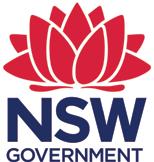
Education Partner

Media Partner
Audit Partner
Chapman Eastway Charitable Foundation
David & Anne Eustace Foundation
Howarth Foundation
Jibb foundation
Sir Asher & Lady Joel Foundation
Key Foundation
Philanthropy Initiative Australia, a giving fund of the APS Foundation
Sinsay Pty Ltd
Stoneglen Foundation
Australian Haydn Ensemble is a not for profit organisation. ABN 26 202 621 166 PO Box 400 Strawberry Hills NSW 2012 1800 334 388 (Freecall) | australianhaydn.com.au
Kevin McCann AO (Chair)
Carolyn Fletcher AM (Deputy Chair)
Adrian Maroya
Skye McIntosh (Artistic Director)
Jon North
Vivienne Skinner
Peter Young AM
Marco Belgiorno-Zegna AM (Chair Emeritus)
Skye McIntosh Artistic Director
Ailsa Veiszadeh Administrator
Alison Dunn
Marketing & Communications
Roderick van Gelder Lighting Design & Production Management
Stephen Bydder Box Office & Administration
Marguerite Foxon Front of House & Administration*
*In Kind Support
John Dearn, Canberra
Jean Gifford, Canberra
Greg & Wendy See, Berry
Stuart & Felicity Coughlan, Berry
Steve & Mary Beare, Berry
Keith & Louise Brodie, Berry
Rob & Antoinette Sampson, Bowral
Alison Dunn, Sydney
Images throughout by Helen White except pages 6 - 8 by James Mills and Supplied and page 13 by Oliver Miller
The Australian Haydn Ensemble acknowledges the traditional custodians of the lands on which we live, rehearse and perform. We pay our respects to Elders past and present.
Details in this program are correct at time of publication. The Australian Haydn Ensemble reserves the right to add, withdraw or substitute artists and to vary the program and other details without notice. Full terms and conditions of sale available at our website australianhaydn.com.au or on request.